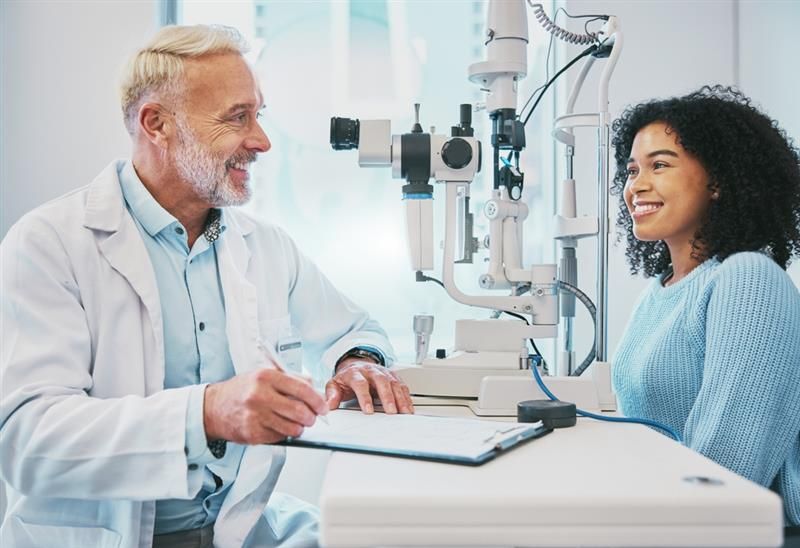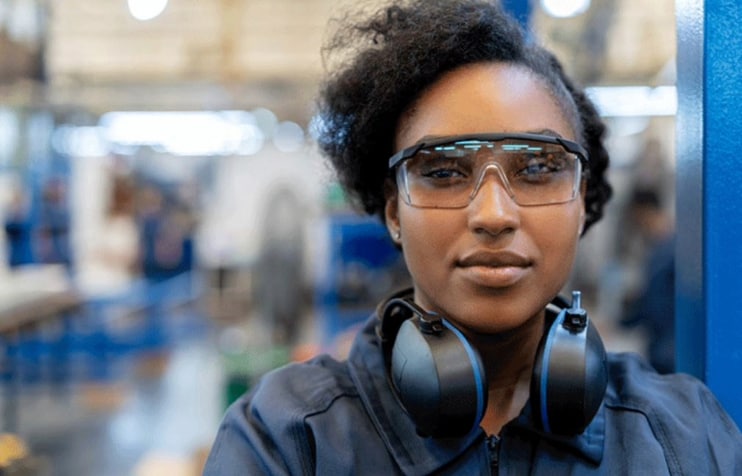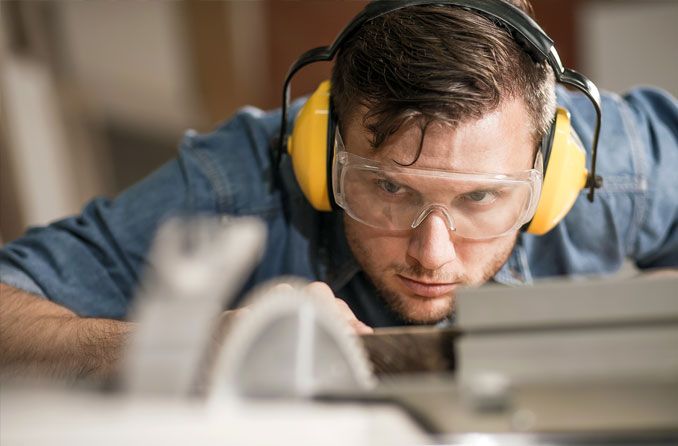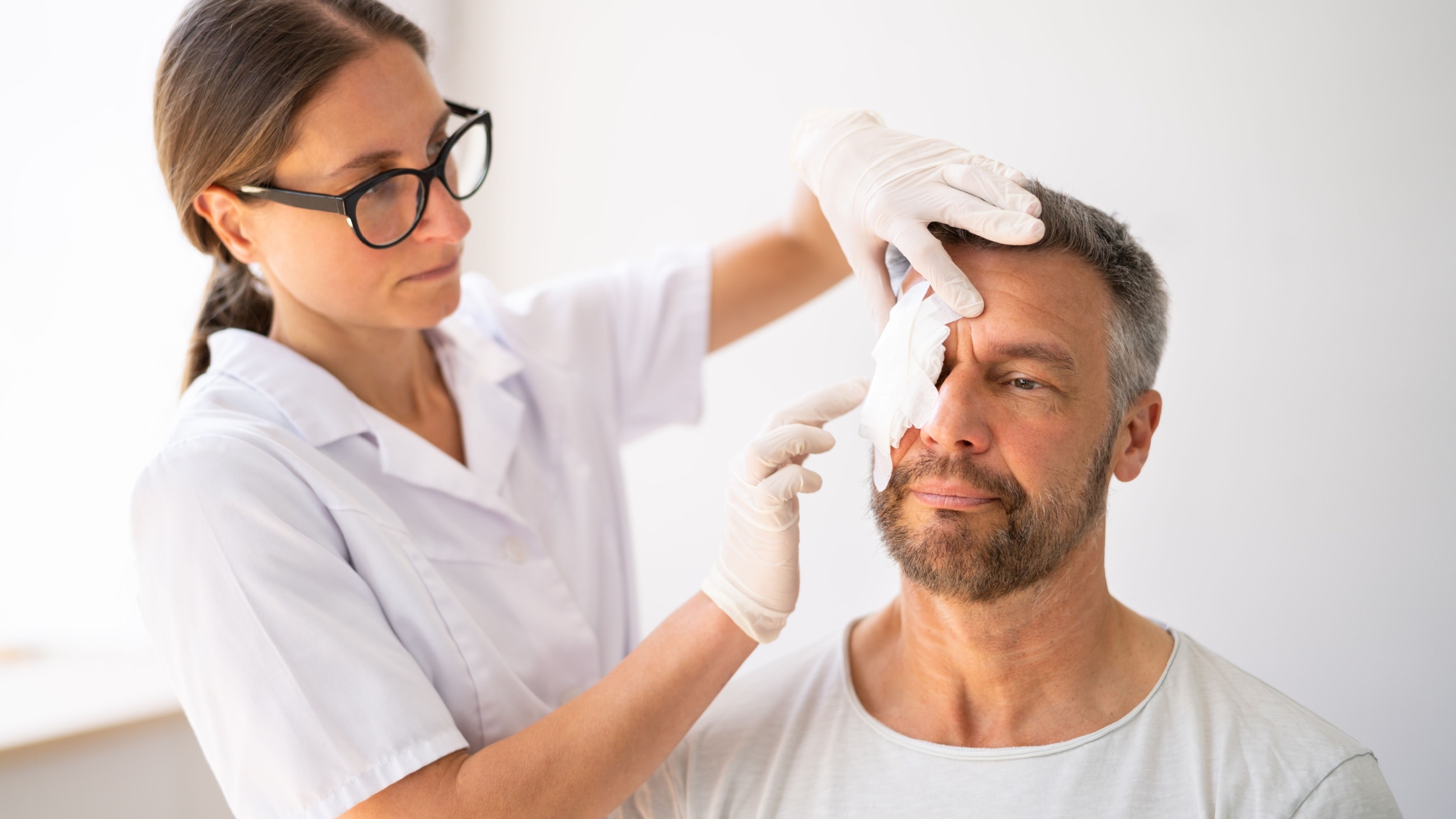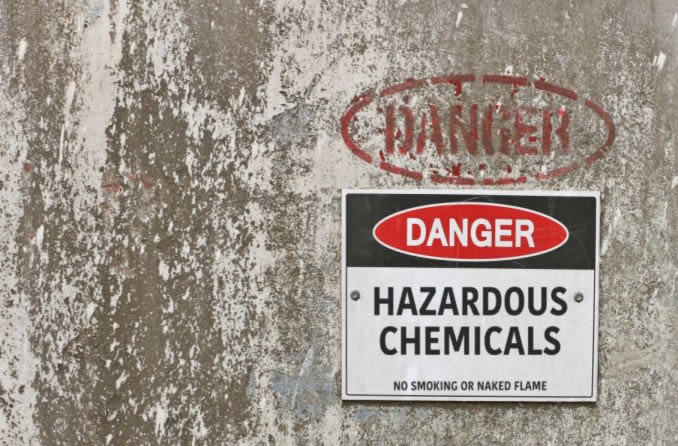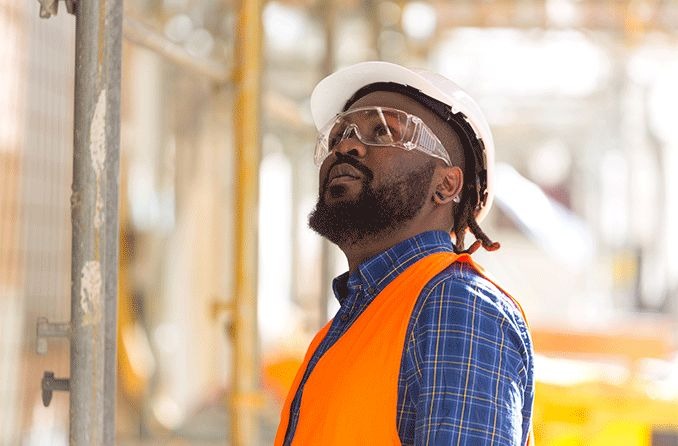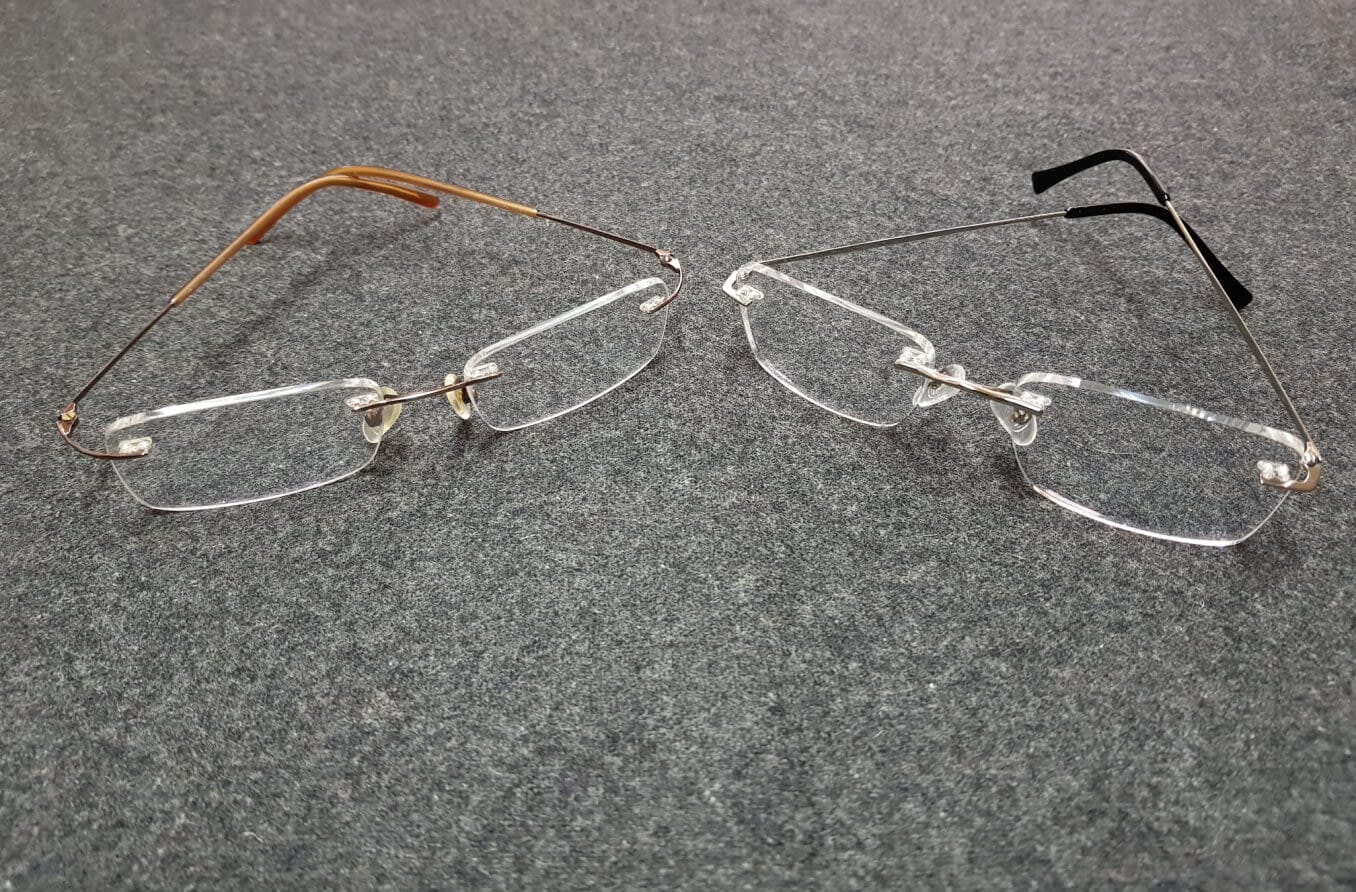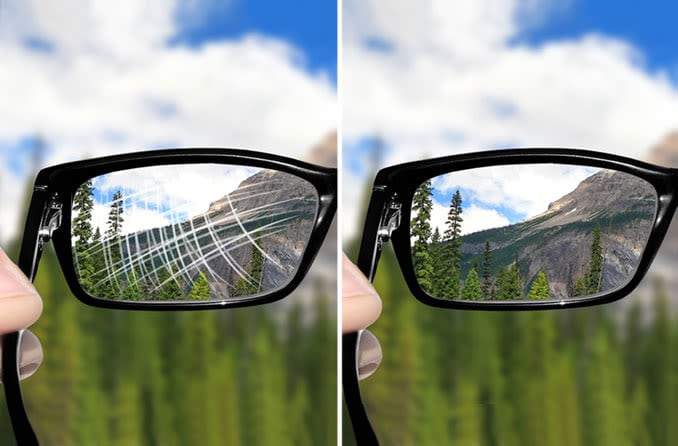Importance of workplace eye protection
Workplace eye injuries impact workers in a variety of industries all over the world. According to the International Labour Organization, around 3.5 million eye injuries occur in the workplace globally each year. In the U.S., around 2,000 American employees suffer work-related eye injuries each day.
Wearing the right safety glasses at work is the best way to avoid eye injuries. Eye doctors and safety professionals stress that wearing proper eye protection can reduce workplace eye injuries by up to 90%.
One survey showed that three-fifths of workers who sustained injuries weren’t wearing eye protection for a task that injured them. They didn't wear protection because they didn’t think they needed it. They were wrong.
Jobs that need protective eyewear
Eye protection is especially important in occupations and industries with higher risk of eye injury. This includes:
- Manufacturing
- Construction
- Carpentry
- Welding
- Mining
- Forestry
- Glassmaking
- Pest control
- Plumbing
- Electrical work
- Auto repair
- Health care, laboratory and janitorial work
The best type of protective eyewear to use will vary based on the specific situation.
SEE RELATED: Eye safety basics
Common workplace eye hazards
Different work environments and occupations present their own potential eye injury risks. A few different types of eye injuries include:
- Impact injuries – When flying objects such as wood dust particles, metal shavings or pieces of equipment get into or strike the eyes.
- Heat-related injuries – When high-temperature items like sparks, very hot air or molten metal splash up into the eyes.
- Chemical eye damage – When dangerous chemicals or fumes get into the eyes, resulting in chemical eye burns.
- Hot steam burns – When certain machinery unexpectedly releases blasts of steam and burns the face and eyes.
- Optical radiation injuries – When high levels of optical radiation damage the eyes. Visible light, ultraviolet radiation from the sun, infrared radiation from lasers and visible light lasers can cause harm.
- Mucous membrane exposure – When pathogens and infectious diseases spread through bodily fluids and other ways. These can be transmitted through the mucous membranes in the eyes.
Protective eyewear can help shield the eyes from various workplace threats. It's the best way to keep them safe while on the job.
How does safety eyewear protect your eyes?
The U.S. Occupational Safety and Health Administration (OSHA) requires protective eyewear to meet higher impact resistance standards than regular glasses.
OSHA uses standards established by the American National Standards Institute (ANSI). Three key areas test the lenses and frames of safety glasses:
- High-velocity impact – This measures how well the lens and frame resist the impact of a small object hitting the lens at high speed.
- High-mass impact – This determines whether the lens will stay in the frame when struck by a fairly heavy object.
- Durability – This tests the frame for corrosion, fire resistance and other important safety factors.
Safety glasses that adhere to ANSI standards are marked as:
- Z87 – Frames for basic impact
- Z87+ – Frames that meet requirements for high impact
- Z87-2 – Frames and lenses that can accommodate a vision prescription
Types of protective eyewear
Safety eyewear is necessary to protect eyes from various hazards in working environments. Designs can combine several features to address different workplace risks.
The three main types of protective eyewear are:
- Safety glasses
- Safety goggles
- Face shields
Other types of eye protection may be recommended or required. This depends on the nature of your work. For example, a welding helmet is a very specialized form of protective eyewear.
Safety glasses
When it comes to protective eyewear, safety glasses are the first level of protection from eye injury. Keep in mind the different options you may have available to best meet your needs:
- Prescription safety glasses – Prescription safety glasses accommodate users who need vision correction. Corrective lens options include single-vision, bifocal or progressive lenses.
- Non-prescription safety glasses – This option is available for those who don’t need corrective lenses. Non-prescription safety glasses are also called “plano” safety glasses.
- Safety glasses with side shields – Safety glasses with side shields are important if there’s any risk of debris flying near your eyes. Examples include dust, metal shavings, wood particles or flying objects.
Safety goggles
Standard safety glasses may not be enough for people who work in labs. Environments with chemical vapor and splash hazards may also require well-fitted safety goggles.
When properly adjusted, the goggles essentially create a seal around your eyes. This allows them to offer strong protection against both liquid and airborne risks. Chemical splashes and fumes, and some types of optical radiation are examples of these risks. Safety goggles should also be impact-resistant.
Safety goggles have three different types of ventilation to choose from:
- Direct ventilated – Air can flow straight into the goggles.
- Indirect ventilated – A covered vent allows ventilation while providing splash protection.
- Non-ventilated – The user receives protection from mist, dust, vapors and liquid.
Before purchasing goggles for eye protection, try them on to make sure the face seal remains intact during wear.
Face shields
A quality face shield offers full-face protection against bloodborne, chemical or spraying hazards. Face shields are made from different transparent materials. They're also available in varied thicknesses to match common workplace tasks and hazards.
Keep in mind that a face shield isn’t designed to be worn by itself. For the greatest benefit, you should wear safety glasses or goggles beneath a face shield. If particles somehow make their way under the shield, the glasses or goggles will still protect your eyes. And, if you lift the shield, your eyes will still be protected from most airborne hazards.
Specialized eye protection
If you’re a welder or you work with lasers, you may need a helmet or special filters on the lenses of your safety eyewear. Doing so protects your eyes from optical radiation and other dangers. In some cases, different types of protection may be worn together to enhance eye safety.
Eye safety at the dentist’s office
Your dentist has probably given you protective eyewear to use during your appointments. These special glasses protect your eyes from particle impact, fluids, UV light and some laser light.
Best lens materials for protective eyewear
Top-notch materials and quality construction should result in effective safety eyewear. No matter what type of eye protection your job requires, it’s not a good idea to give up quality to save a few bucks.
Below are the most common (and reliable) materials used in safety glasses lenses and other protective eyewear.
Polycarbonate lenses
Creating quality safety eyewear begins with top-tier lens materials. Polycarbonate lenses are a very popular choice because they are:
- Lightweight – The material weighs much less than glass and regular plastic. This makes them more comfortable and less likely to slip.
- UV-blocking – Polycarbonate lenses provide 100% UVA-UVB protection, blocking the sun’s harmful rays.
- Impact-resistant – Reinforced impact resistance against flying particles and objects makes polycarbonate highly effective.
Because polycarbonate lenses are softer than glass lenses, they may scratch more easily. This can occur even with a scratch-resistant lens coating. As a result, polycarbonate safety glasses may need more careful handling.
Other lens materials
The following materials are also often used in safety eyewear:
- Plastic (CR-39) – Plastic lenses offer good resistance to pitting and solvent contact. They also weigh half as much as glass lenses.
- Trivex – Trivex lenses offer roughly the same impact resistance as polycarbonate. They have better optical clarity than polycarbonate, but at a higher price.
- Hi-Vex – This material offers better impact resistance than CR-39 lenses. It also comes with many lens coating options.
Choose the right eye protection for you
According to OSHA, employers are responsible for their employees’ eye safety training and practice. A designated safety officer should refer you to your workplace’s OSHA protective eyewear policy. They should also ensure you and other employees have and use the appropriate gear.
The best way to protect your eyes at work depends on your specific situation. You may need glasses with side shields or specialized eye protection. Other people may need safety goggles that can fit over their regular glasses.
Most importantly:
- Wear eye protection.
- Ensure you’re wearing the right eye protection for the task at hand.
Once you take care of this, you will greatly lower your chances of getting an eye injury at work.
READ MORE: Celebrate Healthy Vision Month
